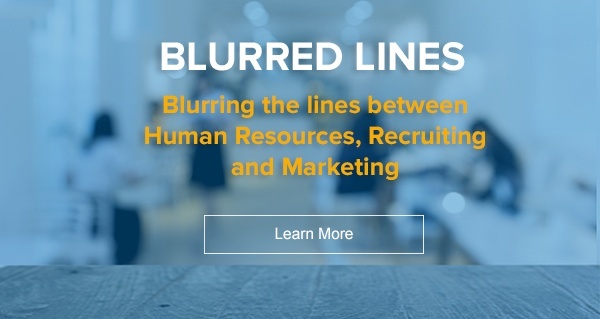
When we last jumped into the talent pool with Erin McDermott Peterson, we heard from Tara Noonan Amaral, former Senior Vice President of Talent Acquisition at Fidelity Investments. In Peterson’s podcast “Big Fish in the Talent Pool,” Amaral shared her experiences and thoughts on several hot trends in the recruiting space, including technology and artificial intelligence.
Now, Peterson is back with another dip into the mind of a talent acquisition expert, this time with David Reed. Reed is Vice President of talent acquisition at ski resort owner and operator Vail Resorts, located in Broomfield, Colorado, and spent nearly twenty eight years working at Accenture, along the way transitioning from life as an accountant to one as a recruiter.
Vail Resorts, a public company founded in the early 1960s, runs five ski resorts in Colorado, three in Lake Tahoe, one in Utah, one in Vermont, one in Minnesota, one in Michigan, one in Wisconsin, one in New South Wales, Australia, one in British Columbia, and a summer resort in Wyoming.
Peterson and Reed talk about what it takes to be a talent acquisition leader in today’s business world, investing in dreams, and more in the latest “Big Fish in the Talent Pool.” The following is a highlight of this conversation.
The importance of wide-ranging experience
Before he became involved in talent acquisition, Reed began his career as an accountant. Unfortunately, Reed soon learned that accounting wasn’t quite for him – a field for which he had “no passion.” Reed lost his accounting position over this lack of passion: “it showed in my work!”
Despite the career setback – the second to date at that point – Reed explains he doesn’t regret his financial training and education. The experience has actually been a boon for Reed in his new career.
“I describe myself as a business person who happens to know quite a bit about recruiting,” explains Reed. “If you want to become a leader in any field, especially with recruiting, you have to come from a place of business acumen.”
Reed offers some detail on how this financial business acumen and recruiting acumen come together in his work at Vail Resorts: once a quarter, Reed and his leadership team listen in on the investor call, read the release, and then discuss in detail afterward.
“What did we hear? Where is the business? How does it apply to what we’re trying to do and what our priorities are in talent acquisition?”
The understanding of the business trends in your industry is essential to a strong recruiting program for that industry, says Reed, because if you have a depth of understanding of how business works, you can have a depth of understanding about what’s important to your stakeholder group.
“What I have found is the more I understand and am fully engaged with the business strategy, the better I am at recruiting and rhode recruiting needs to support that broader business objective.”
Balancing Strategic and Tactical Work

As Reed explains, Vail Resorts experiences two large periods of employee onboarding and offboarding throughout the year: a large period during the winter season and a somewhat smaller period during summer. Vail Resorts takes on nearly 25,000 employees in three months leading up to the start of the winter season and will no longer need most of them by the time spring rolls around. Needless to say, a balance between long term planning and the tactical footwork of hiring is an important consideration.
“The goal I set for myself is to be 100 percent strategic and work from there,” says Reed. “I’m very goal oriented, and so goals remain at the forefront of the way I prioritize my days.”
To help balance his focus on the strategy, Reed surrounds himself with fellow employees who understand his focus and help meet his goals through tactical means.
“I also have relationships with business leaders who have the expectation that I focus on the strategic. So it helps to know that they support my focus on that as much as I want to be in that space.”
Reed supplements his strategic-meets-tactical work environment with his own personal touch on scoping strategy: during visits to Vail Resorts locations, Reed walks around the resort, talking to employees and visitors to better understand how they’re enjoying their experience, what could be improved, and what they love.
Understanding Key Metrics
For any business looking to get a handle on recruiting, a thorough understanding the metrics your organization needs to execute a strategy is crucial, advises Reed. Vail Resorts looks at a variety of metrics, with two standing above others as most important. On the seasonal side of things, efficiency is king.
“If Vail Mountain, which has 4,000 people running that mountain, is at 4,000 employees, that’s great. If it’s at 3,500 people, not so great,” Reed explains. “Our ability to achieve adequate staffing levels is the main metric on that side.”
On the corporate side of things, time-to-fill is an area Reed and his team are studying. Time-to-fill tends to be a “lagging” metric, Reed explains: by the time the results are in on that data, it's too late to do anything about it. To better understand how time-to-fill can be improved, Reed and his team look at other metrics that play a role in time-to-fill, such as hiring manager responsiveness.
“What we found is there is a direct connection between our ability to fill a position and the hiring manager’s timeliness in participation.”
Vail Resorts implemented a measuring and reporting system for hiring managers after making that connection, which has been proving effective.
“It’s made a remarkable difference in terms of our ability to staff.”
For more insight from Peterson and Reed, including thoughts on candidate and employee experience, branding, and advice for upcoming talent acquisition leaders, click in to the latest episode of “Big Fish in the Talent Pool” and stay tuned for more need-to-know recruiting news from the Recruitment Process Outsourcing Association.















